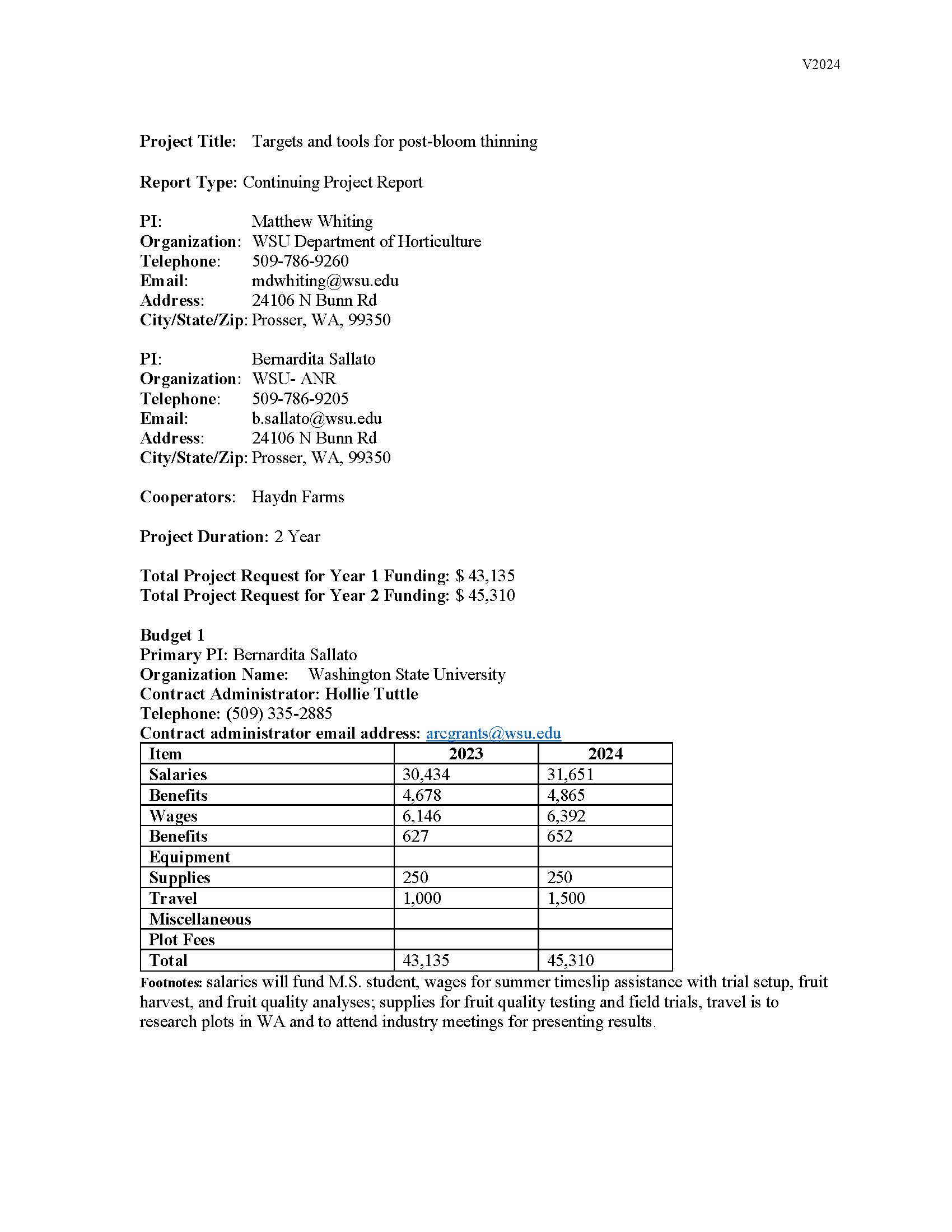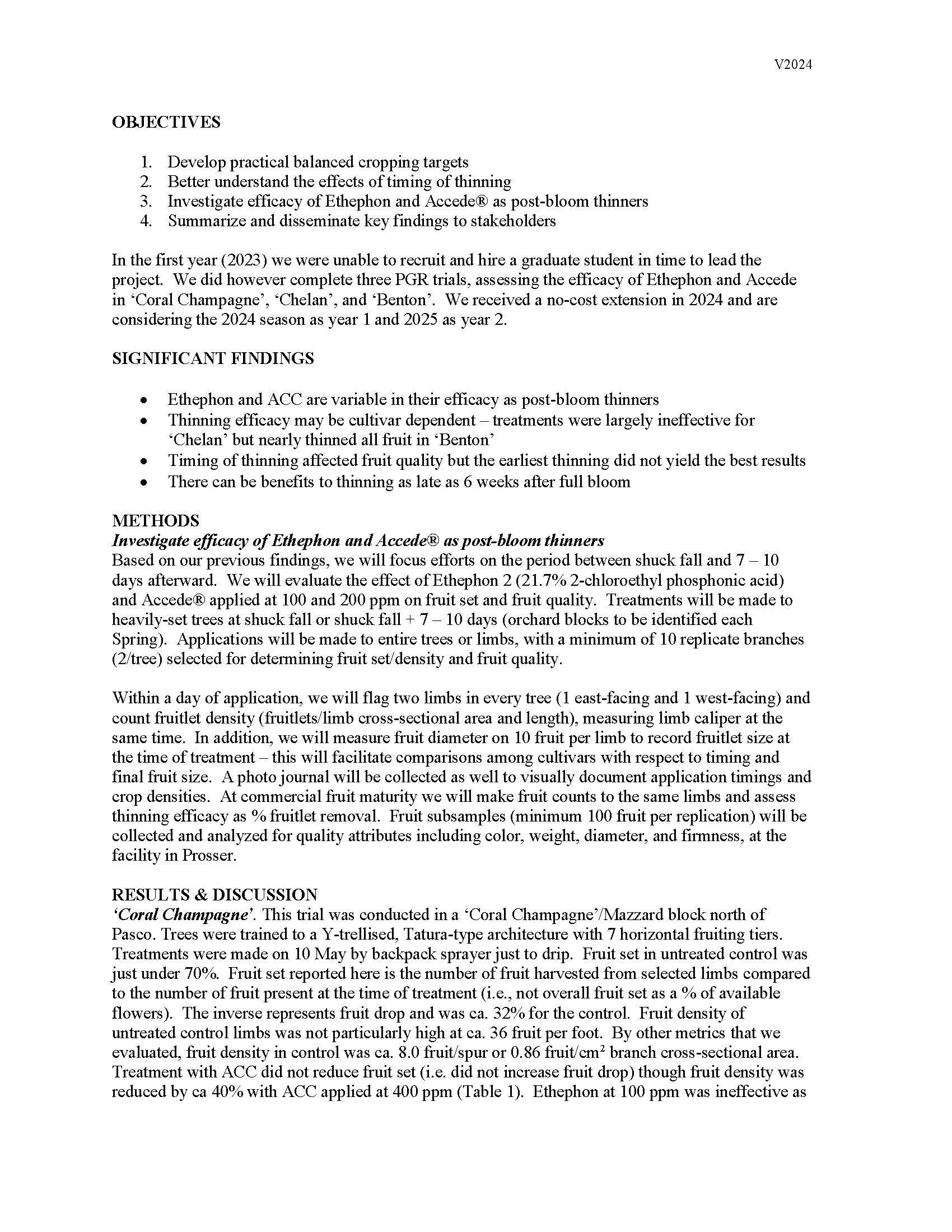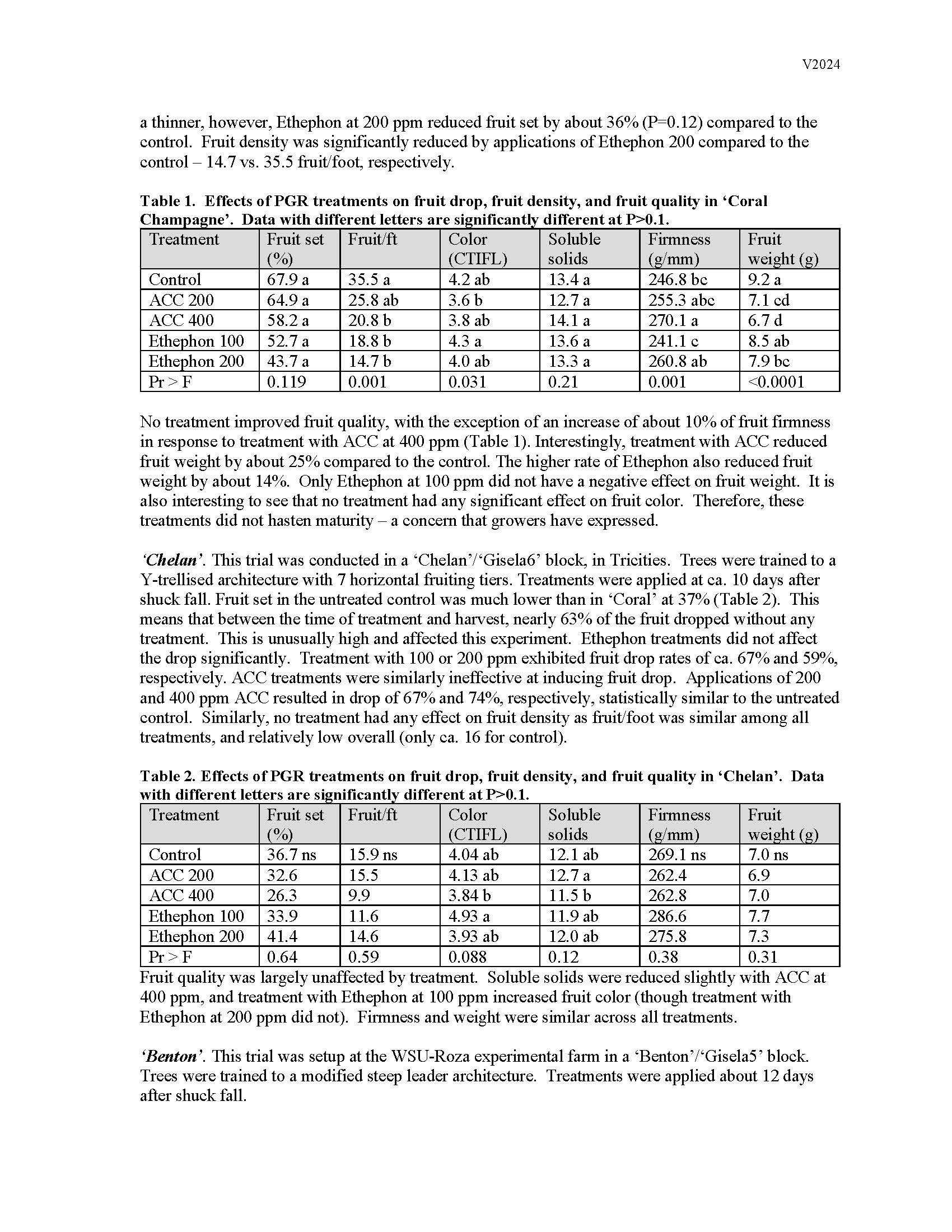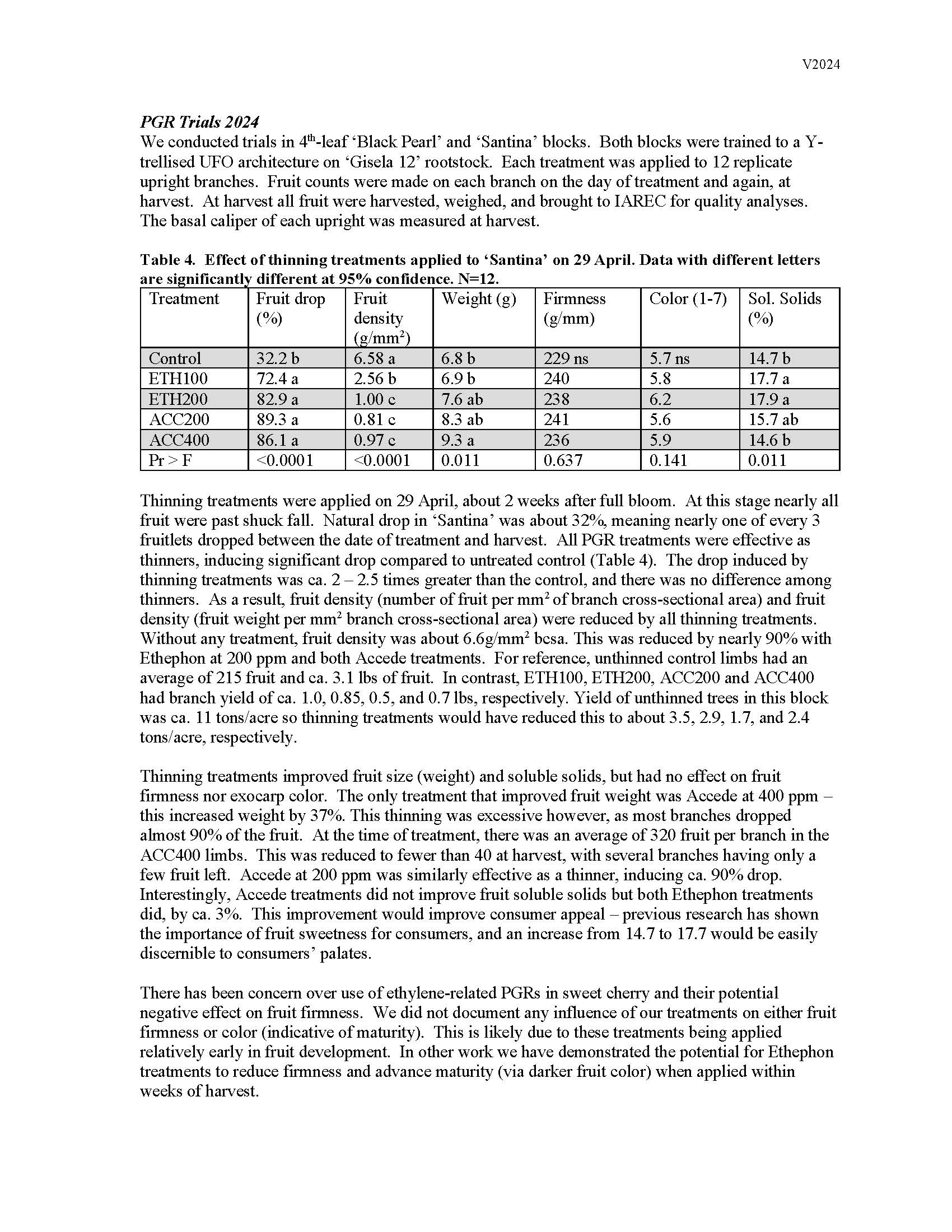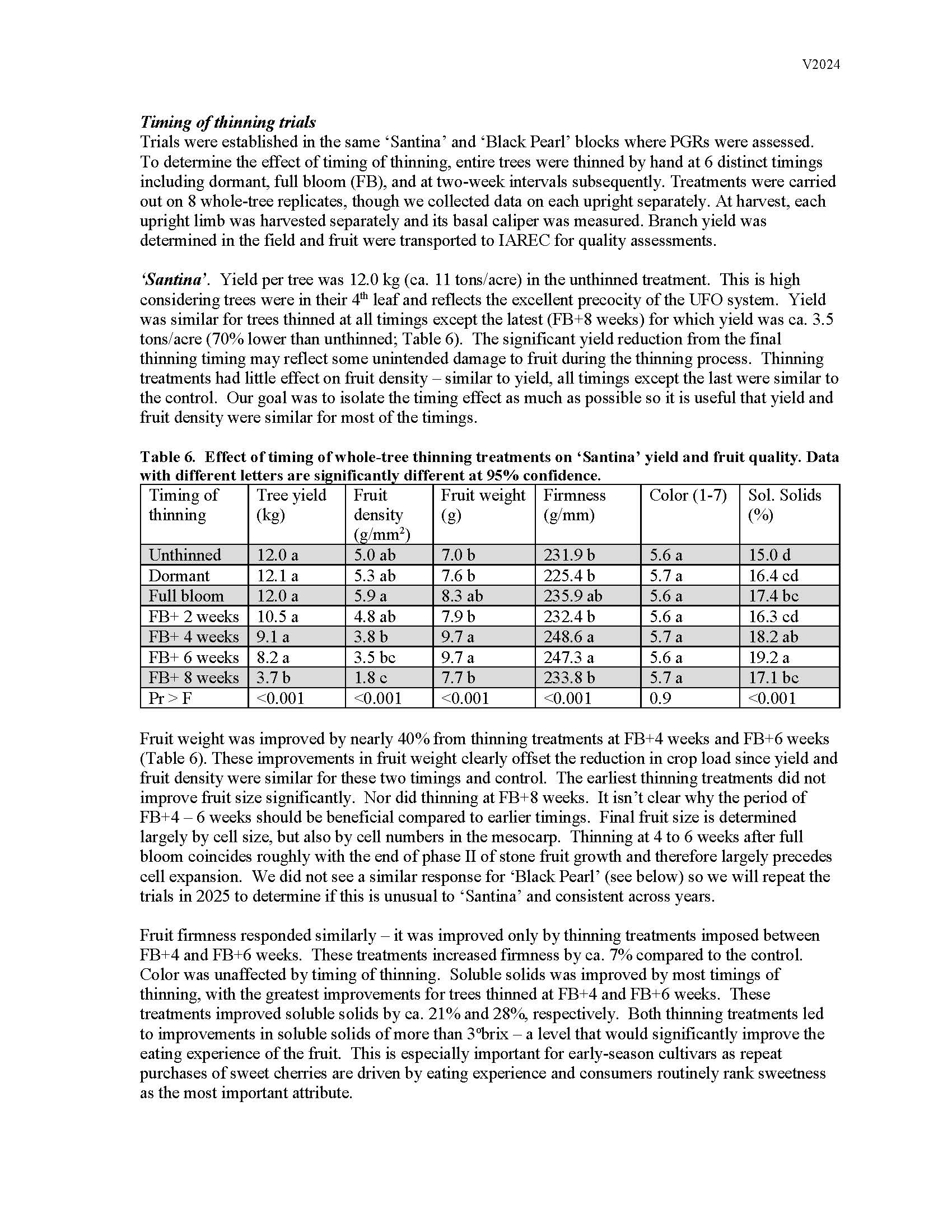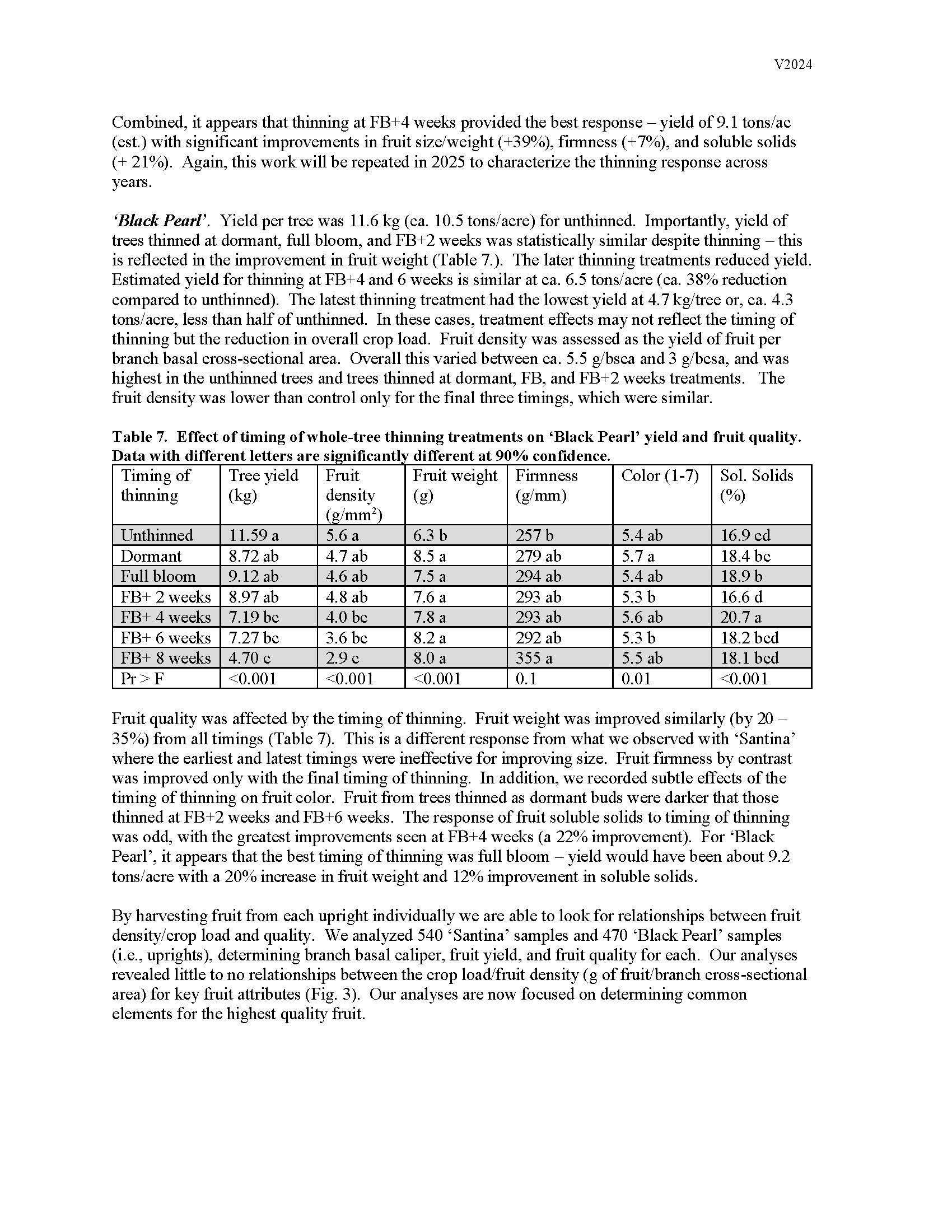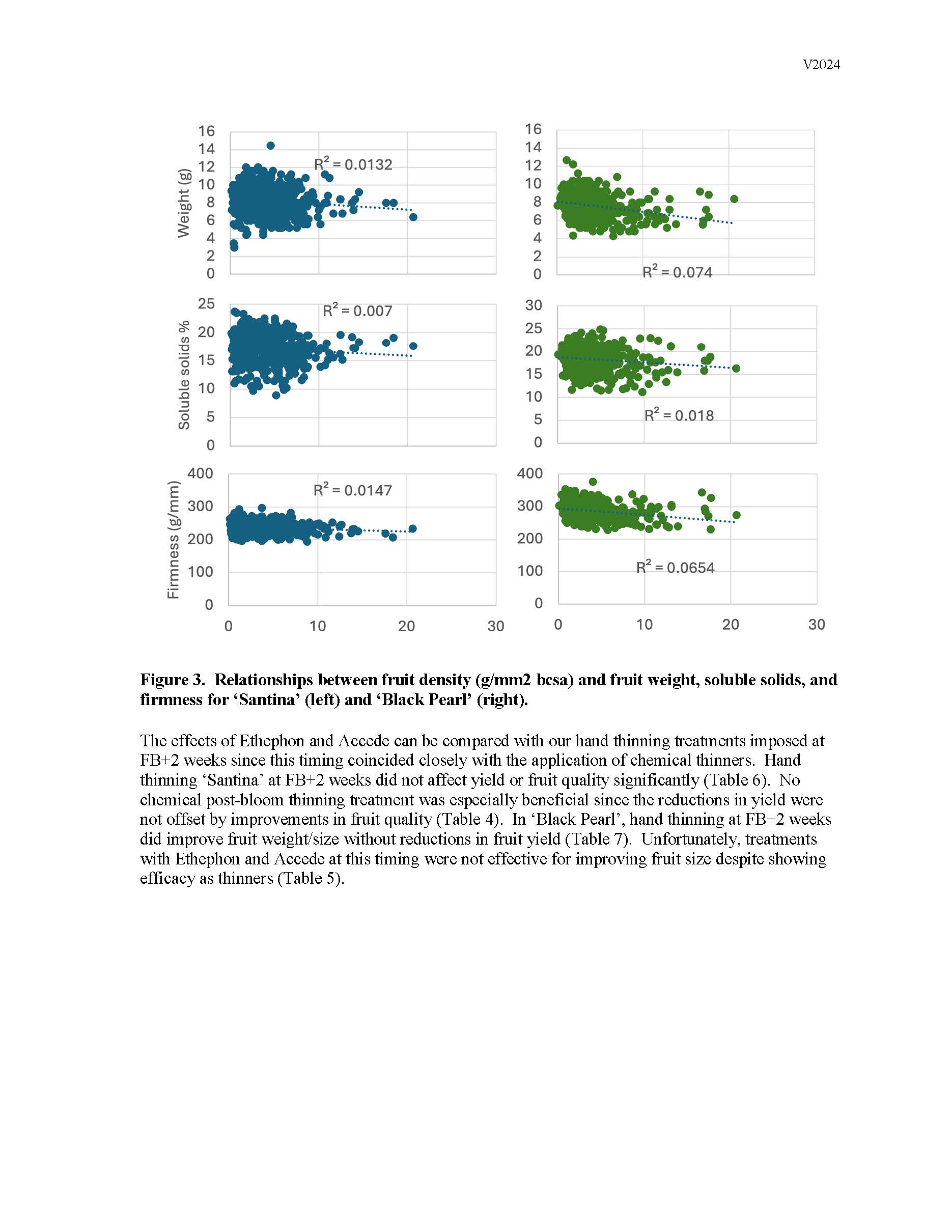Targets and tools for post-bloom thinning
Author: Matthew Whiting
Published: 2025
Summary: This project has evaluated the effect of timing of thinning as well as the efficacy of EthephonII and Accede as post-bloom thinning agents in several cultivars. We found that, when crop load is high, there are benefits from thinning as late as 6 weeks after full bloom (ca. straw timing – the transition from stage II to stage III of fruit growth). The best response in ‘Santina’ occurred from thinning at ca. 4 weeks after full bloom whereas the best response to thinning in ‘Black Pearl’ was at full bloom. It is not clear why there would be differences between cultivars in their response to thinning – this will be investigated further in 2025. Both EthephonII and Accede can induce fruit drop when applied about shuck fall (ca. 2 weeks after full bloom). The response may vary among cultivars though this has yet to be determined across years. These treatments improved fruit soluble solids but did not always improve size. At this stage, we recommend further testing (which we will do in 2025) before recommending either PGR for post-bloom thinning. Key words:
Keywords:

